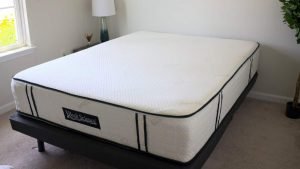How to Wash Pillows: A Comprehensive Guide to Pillow Care


Pillows play a significant role in our sleep quality and overall well-being. A clean, fluffy pillow can make a big difference between a good night’s sleep and a restless night. So, if you haven’t given your pillow a deep cleanse in the last six months, it’s time to schedule a pillow cleaning session!
If you’re reading this, chances are you want to know how to wash your pillows. We’ve got you covered! This guide provides you with all the secrets to keep your pillows fresh and clean, including the correct methods for machine and hand washing and tips for drying and fluffing your pillows so they’re as comfortable as the day you bought them.
What happens when you don't clean your pillows regularly?
Neglecting to wash your pillow can lead to a range of issues like dust mites and pet dander accumulation, which can cause allergies and respiratory problems. It can also cause unpleasant odors, reduce pillow lifespan, and lead to potential skin issues due to bacteria and fungi.
Stains and discoloration may also develop over time, making your pillow unhygienic and unappealing. In the long run, an unwashed pillow can pose health risks, particularly for individuals with allergies or respiratory conditions, highlighting the importance of regular pillow maintenance for a healthy and comfortable night’s sleep.
Related: Best Mattresses for Allergies
Preparing Your Pillows For Cleaning
Before you dive into the pillow-washing process, it’s crucial to prepare your pillows properly. Here’s a step-by-step guide:
1. Reading Care Labels and Manufacturer Recommendations: Always take a moment to check the care label on your pillow or any manufacturer recommendations. This step is essential, as it provides specific guidelines for cleaning and ensures you don’t accidentally damage your pillow or void your warranty during the washing process.
2. Remove Pillowcases and Protectors: If indicated, start by gently removing any pillowcases or protectors. These can usually be machine-washed separately. If your pillow has a removable cover, unzip or unbutton it and remove it as well. Shake out any loose debris to ensure a more effective wash.
Machine Washing Your Pillows
Machine washing your pillows can be an efficient way to refresh them. Here’s how to do it safely:
1. Pre-Treating Stains: If your pillow has stubborn stains, it’s best to pre-treat them before washing. Apply a small amount of mild detergent or a stain remover directly to the stained area. Gently rub the detergent into the stain with a soft cloth or sponge. Let it sit for a few minutes to penetrate the stain before washing.
2. Recommended Washing Settings: Use a large-capacity washing machine, preferably a front-loader, to accommodate the pillow’s size. Select a gentle or delicate cycle with a slow spin speed to prevent excessive wear and tear.
3. Using the Right Detergent: Choose a mild, liquid detergent to avoid residue buildup. Avoid using bleach or harsh chemicals that could damage the pillow material.
4. Precautions: Wash two pillows at a time to balance the load and prevent uneven wear. You can also add a few towels to the load to maintain balance. Make sure the pillows are thoroughly rinsed to remove all detergent residue.
Hand Washing Pillows
For more delicate or sensitive pillows, hand washing is a suitable alternative. Here’s how to do it:
1. Prepare Mild Detergent and Lukewarm Water: Fill a large basin or bathtub with lukewarm water. Add a mild liquid detergent and mix it until it’s well-dissolved.
2. Submerge and Gently Agitate: Place the pillow in the soapy water and gently agitate it with your hands. Be careful not to wring or twist the pillow, as this can damage the filling or cover.
3. Rinse Thoroughly: Drain the soapy water and refill the basin or bathtub with clean water. Rinse the pillow by gently agitating it in the clean water until all detergent is removed.
4. Squeeze Out Excess Water: Gently press down on the pillow to remove excess water, but avoid twisting or wringing.
Drying Pillows
Proper drying is crucial to maintain your pillow’s shape and comfort. Here’s how to do it correctly:
1. Machine Drying: Place the pillows in a large-capacity dryer if the care label allows machine drying. Add a couple of tennis balls or dryer balls to help fluff the pillows. Use a low heat setting and check the pillows periodically to ensure they dry evenly.
2. Air-Drying: Opt for air-drying if your pillows aren’t suitable for machine drying. Place them in a well-ventilated area, ideally in direct sunlight, and fluff them regularly. This may take longer but is gentler on delicate pillows. Give your pillows a good shake to distribute the filling evenly. This helps restore their loft and fluffiness.
Washing Pillows Based on Their Fill
Pillows come in a variety of materials, each offering a unique sleeping experience. Understanding the distinct types of pillows and their care requirements is vital to ensuring the longevity and cleanliness of your pillow. While pillows filled with feathers, down, or synthetic materials like polyester are typically machine washable and suitable for machine drying, others, such as memory foam, latex, and silk, have specific care needs
Memory Foam
Single-piece memory foam pillows should not be machine-washed to prevent potential damage to the memory foam. Instead, opt for spot cleaning to address stains. However, shredded memory foam pillows, like the Coop Eden, can withstand machine washing and drying, making them more convenient to clean.
Latex
Latex pillows are known for their durability and hypoallergenic properties. They can be spot-cleaned as needed, but avoiding excessive water exposure is crucial, which may damage the latex material.
Silk
Silk pillows are a luxurious choice known for their soft and smooth texture. While silk is a delicate fabric, most silk pillows come with a separate silk pillowcase that you can remove and wash separately. When it comes to the silk pillow itself, it’s generally not recommended to machine wash it. Spot clean any stains using a damp cloth, and allow it to air out to maintain its pristine quality. Keep in mind that silk pillows are often chosen for their elegance and may require extra attention to preserve their exquisite feel.
By recognizing the specific care instructions for each pillow type, you can ensure they stay clean, comfortable, and in excellent condition, ultimately enhancing your sleep quality.
Final Thoughts
Washing your pillows isn’t just about maintaining cleanliness; it’s also a crucial step in ensuring your sleep comfort and extending the lifespan of your pillow. It’s important to note that even if your pillows don’t have noticeable stains or odors, washing them twice a year is recommended. Doing so can prevent the gradual accumulation of allergens, bacteria, and odors that can impact your health and sleep quality over time.
Discover Better Sleep!
Subscribe for the latest sleep insights, wellness advice, and expert sleep tips!













